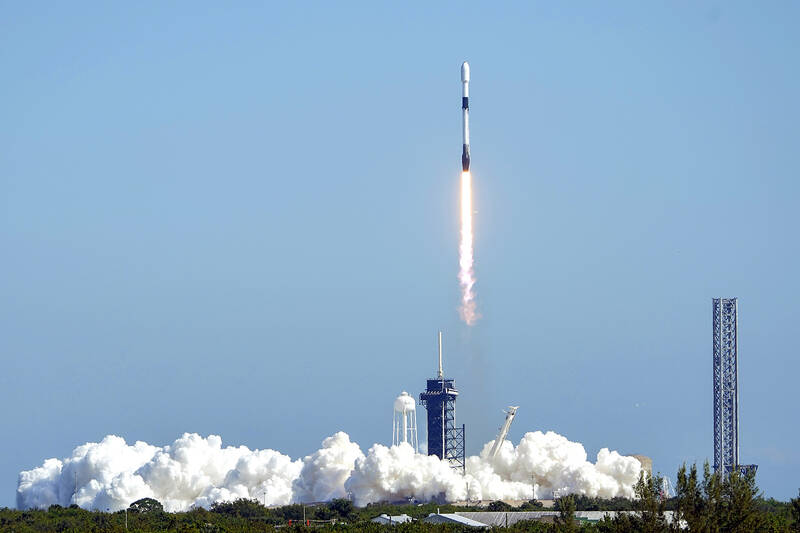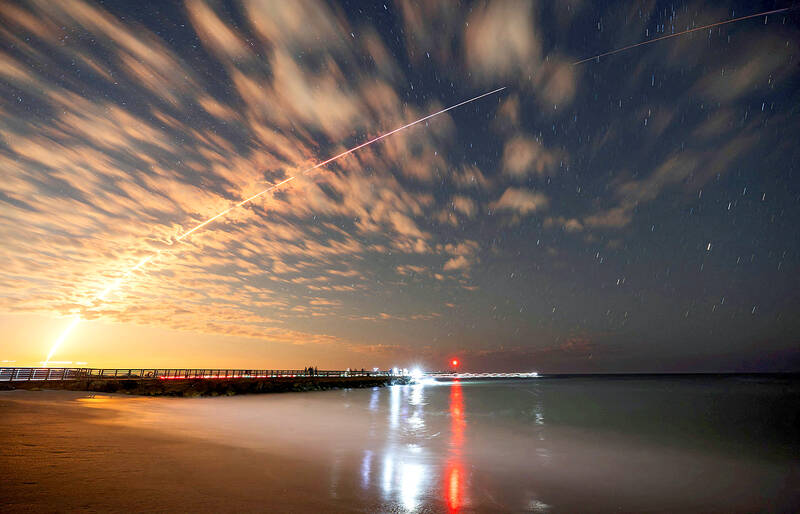Climate change is already causing all sorts of problems on Earth, but soon it will be making a mess in orbit around the planet too, a new study finds.
MIT researchers calculated that as global warming caused by burning of coal, oil, gas continues it may reduce the available space for satellites in low Earth orbit by anywhere from one-third to 82 percent by the end of the century, depending on how much carbon pollution is spewed. That’s because space will become more littered with debris as climate change lessens nature’s way of cleaning it up.
Part of the greenhouse effect that warms the air near Earth’s surface also cools the upper parts of the atmosphere where space starts and satellites zip around in low orbit, That cooling also makes the upper atmosphere less dense, which reduces the drag on the millions of pieces of human-made debris and satellites.

Photo: AP
That drag pulls space junk down to Earth, burning up on the way. But a cooler and less dense upper atmosphere means less space cleaning itself. That means that space gets more crowded, according to a study in Monday’s journal Nature Sustainability.
“We rely on the atmosphere to clean up our debris. There’s no other way to remove debris,” said study lead author Will Parker, an astrodynamics researcher at MIT. “It’s trash. It’s garbage. And there are millions of pieces of it.”
Circling Earth are millions of pieces of debris about 3 millimeters and larger — the width of two stacked pennies — and those collide with the energy of a bullet. There are tens of thousands of plum-sized pieces of space junk that hit with the power of a crashing bus, according to The Aerospace Corporation, which monitors orbital debris. That junk includes results of old space crashes and parts of rockets with most of it too small to be tracked.

Photo: Reuters
There are 11,905 satellites circling Earth — 7,356 in low orbit — according to the tracking website Orbiting Now. Satellites are critical for communications, navigation, weather forecasting and monitoring environmental and national security issues.
“There used to be this mantra that space is big. And so we can we can sort of not necessarily be good stewards of the environment because the environment is basically unlimited,” Parker said.
But a 2009 crash of two satellites created thousands of pieces of space junk. Also NASA measurements are showing measurable the reduction of drag, so scientists now realize that “the climate change component is really important,” Parker said.
The density at 400 kilometers above Earth is decreasing by about 2 percent a decade and is likely to get intensify as society pumps more greenhouse gas into the atmosphere, said Ingrid Cnossen, a space weather scientist at the British Antarctic Survey who was not part of the research.
Cnossen said in an e-mail that the new study makes “perfect sense” and is why scientists have to be aware of climate change’s orbital effects “so that appropriate measures can be taken to ensure its long-term sustainability.”

This is a deeply unsettling period in Taiwan. Uncertainties are everywhere while everyone waits for a small army of other shoes to drop on nearly every front. During challenging times, interesting political changes can happen, yet all three major political parties are beset with scandals, strife and self-inflicted wounds. As the ruling party, the Democratic Progressive Party (DPP) is held accountable for not only the challenges to the party, but also the nation. Taiwan is geopolitically and economically under threat. Domestically, the administration is under siege by the opposition-controlled legislature and growing discontent with what opponents characterize as arrogant, autocratic

June 16 to June 22 The following flyer appeared on the streets of Hsinchu on June 12, 1895: “Taipei has already fallen to the Japanese barbarians, who have brought great misery to our land and people. We heard that the Japanese occupiers will tax our gardens, our houses, our bodies, and even our chickens, dogs, cows and pigs. They wear their hair wild, carve their teeth, tattoo their foreheads, wear strange clothes and speak a strange language. How can we be ruled by such people?” Posted by civilian militia leader Wu Tang-hsing (吳湯興), it was a call to arms to retake

The canonical shot of an East Asian city is a night skyline studded with towering apartment and office buildings, bright with neon and plastic signage, a landscape of energy and modernity. Another classic image is the same city seen from above, in which identical apartment towers march across the city, spilling out over nearby geography, like stylized soldiers colonizing new territory in a board game. Densely populated dynamic conurbations of money, technological innovation and convenience, it is hard to see the cities of East Asia as what they truly are: necropolises. Why is this? The East Asian development model, with

When Lisa, 20, laces into her ultra-high heels for her shift at a strip club in Ukraine’s Kharkiv, she knows that aside from dancing, she will have to comfort traumatized soldiers. Since Russia’s 2022 invasion, exhausted troops are the main clientele of the Flash Dancers club in the center of the northeastern city, just 20 kilometers from Russian forces. For some customers, it provides an “escape” from the war, said Valerya Zavatska — a 25-year-old law graduate who runs the club with her mother, an ex-dancer. But many are not there just for the show. They “want to talk about what hurts,” she